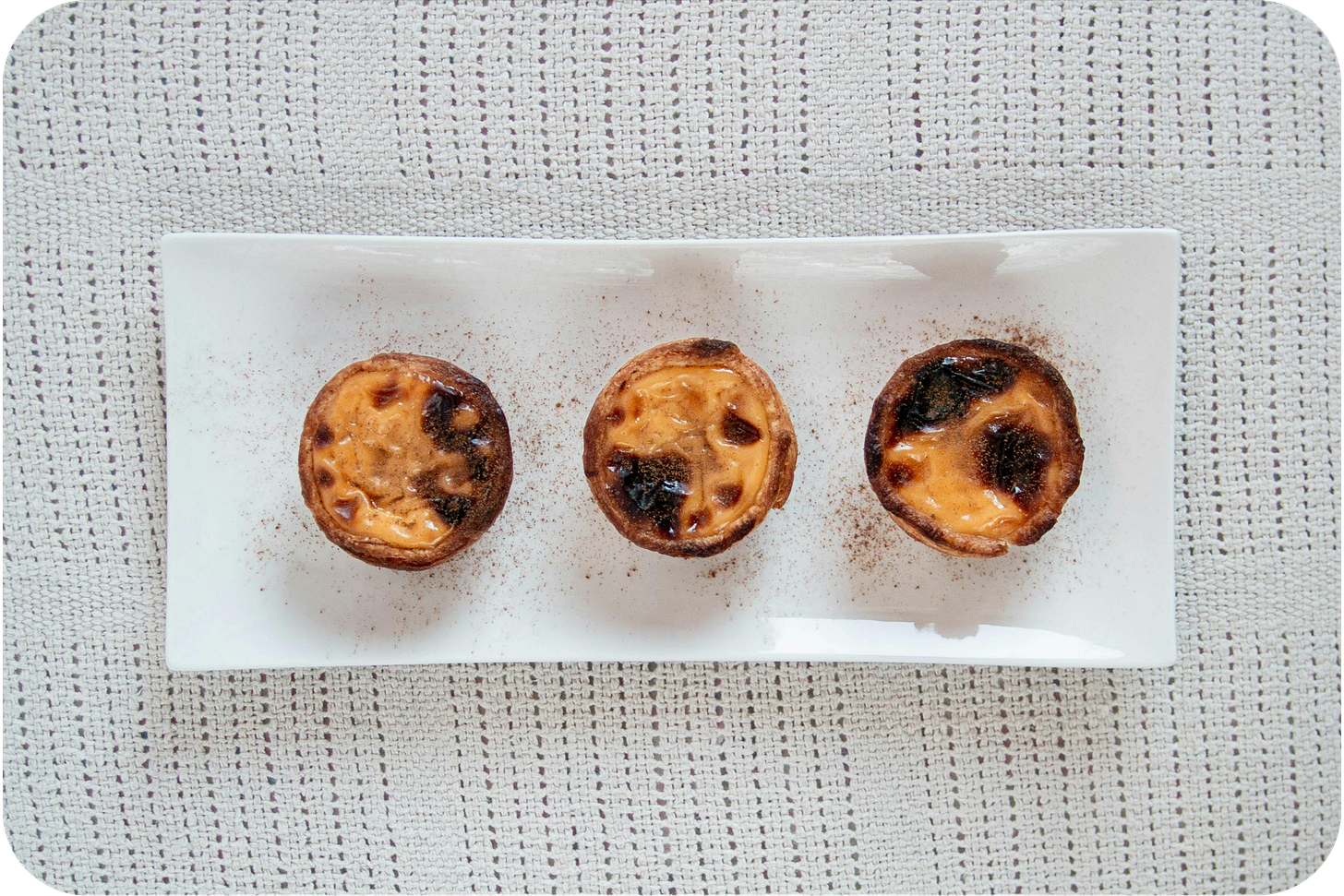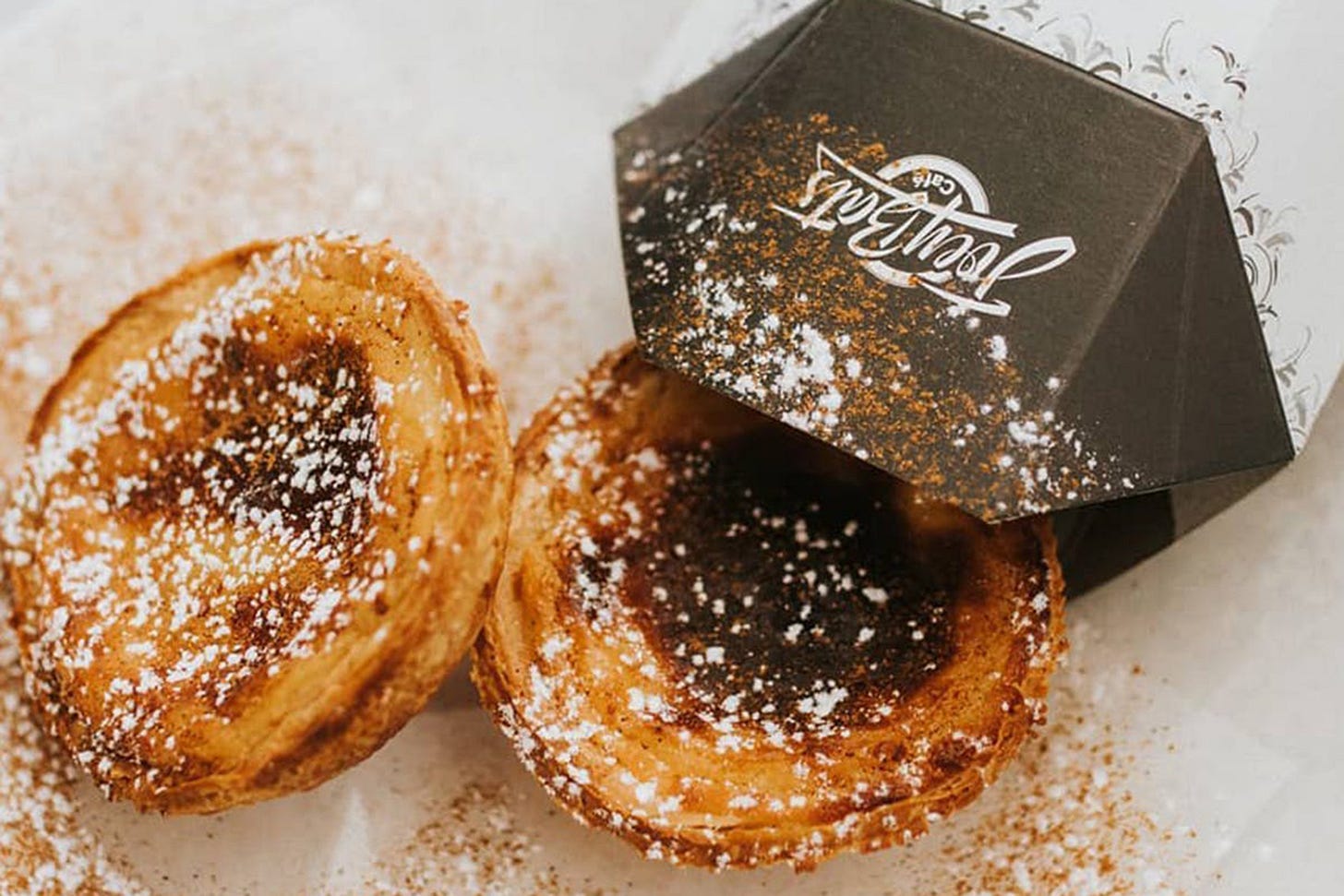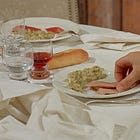Poor Things + A Secret Portuguese Custard Tart Recipe
Emma Stone's Bella Baxter Can't Stop Eating Pastéis de Nata, and Neither Can We
How would an adult with utter childlike wonder and curiosity navigate the world?
Poor Things, the latest directorial effort of Greek filmmaker Yorgos Lanthimos (The Favourite, The Lobster), offers one answer to this thought experiment. Something of a Frankenstein-meets-Barbie tale, Poor Things chronicles a peek into a life without prejudices or inhibitions. In my humble opinion, it is one of the best films to have been released in 2023.
For those uninitiated, Poor Things kicks off when an avant-garde scientist (Willem DaFoe) brings to life a once-dead woman (Emma Stone) via a brain transplant. After being “raised” in the captivity of the scientist’s home, the woman runs away with a lawyer (Mark Ruffalo) and embarks on a wild journey around Victorian-era Europe — or at least an alternate-universe version of the continent, in which flying cars were commonplace in the 1800s.
As Emma Stone’s Bella Baxter experiences the highs and lows of life — from sexual escapades and trying new foods to learning about slavery and other horrors of our world — culinary experiences seem to be among Bella’s favorites. From her first sips of alcohol to first bites of Parisian éclairs, nothing quite compares to Bella’s first foray into Portuguese desserts.
After only briefly exploring Lisbon, Portugal, Bella discovers one of the best pastries the country has to offer: The Pastel de Nata
An Introduction to Pastéis de Nata
Pastéis de nata are Portuguese egg custard tarts with flaky crusts, spiced creme fillings, and caramelized tops.
While sweet egg-based tarts and treats were common in Portugal as early as the Middle Ages, the history of pastéis de nata starts roughly in the 18th century at the Jerónimos Monastery. There, monks would use egg whites to starch their clothes and were looking for creative ways to use up the leftover egg yolks. Once the recipe was perfected, the monks began selling pastéis de nata to raise funds for the monastery.
After the monastery closed its doors in 1834, the coveted secret recipe was sold a few times, and eventually landed in the hands of the Pastéis de Belém bakery.
Today, the Jerónimos Monastery is a UNESCO world heritage site, and the Pastéis de Belém is still one of the most popular spots to purchase the delectable pastries today. Over the years, this dessert’s popularity spread well beyond Lisbon, and pastéis de nata are now readily available throughout Portugal.
Note: Somewhat confusingly, pastéis de nata are sometimes called pastéis de Belém; the “Belém” refers to either the specific district in Lisbon or the aforementioned Pastéis de Belém bakery alone, where baker’s recipes differ slightly from that of the typical de nata by being a touch less sweet.
How to Make Pastéis de Nata
Similar but not quite akin to British and French custard tarts, pastéis de nata feature a layered, flaky crust with a custard filling flavored with cinnamon and lemon.
I don’t know about you, but as a baker who errs on the side of lazy, when I hear “layered” I think “phyllo dough” or “puff pastry.” While puff pastry could do in an absolute pinch, it probably won’t provide the full pastel de nata experience. (Also, I hear some puff pastry brands may puff a little too close to the sun, and the custard could spill all over your oven.)
When it comes to making pastel de nata dough at home, recipe authors seem to be split down the middle in terms of method: Great British Bake-Off’s Paul Hollywood recommends making the dough like one would make a croissant, rolling the dough out, grating cold hard butter over the dough (as opposed to spreading warm butter with a knife), and folding. Others say the butter must be melted or at least room temperature prior to spreading.
Per many Portuguese sources, the real trick to Pastel de Nata dough seems to be to use butter or margarine with a high fat content, often labeled “pastry” or “dry” butter. The extra fat makes the butter more elastic and easier to work with right out of the fridge. In the USA, in lieu of purchasing expensive high fat butter at a specialty grocer, one could also try Amish butter, which often has a higher fat content.
Whichever butter method you choose, after the dough is made, the rest of the gist of most recipes is as follows: Cut the dough in circles, shape into cups, and place in tart molds (or a shallow mini muffin tin). Pour in the custard (made with eggs and cream hours before), and throw into a toasty oven at the highest temperature available, until golden brown. Garnish with cinnamon and sugar.
Some of the Most-Loved Pastéis de Nata Recipes Available:
How to Order Pastéis de Nata
Poor Things has officially partnered with Joey Bats Cafe in Chelsea Market in New York City, where patrons can try a Pastel de Nata for themselves. Non-New Yorkers can purchase the same pastries via Goldbelly, priced at $89.95 for a 24-pack, and must be baked at-home.
If you are not interested in doing any baking yourself and live in a city, might I recommend simply searching “pastel de nata” in Google Maps? A cursory search shows most major cities in North America and Europe have plenty of Portuguese bakeries and restaurants that offer the dessert.
Side Note: If you’re interested in more “Poor Things” brand collaboration consumerism, a salted caramel milk chocolate bar, a tin of sardines in EVOO, and $580 pairs of Bella-Baxter-inspired sunglasses are available to purchase. Of course, if you’re going to spend money on “Poor Things” memorabilia, purchasing the book the film is based off of wouldn’t be a bad idea, either.
Poor Things is the Perfect Film to Pair with Pastries
There, I said it! Like other films with memorable food scenes, Poor Things recognizes that the enjoyment of food is part of what makes humans human and life worth living.
When so much attention is given to our eyes and ears in today’s content-filled world, acknowledging our ability to taste, touch, and smell the finer things in life is the ultimate gratitude practice in my book.
And, what better way to appreciate all five senses than to eat a delicious flaky pastry while watching one of the most stunningly gorgeous films in recent memory?
If you do not set aside time this week to try smuggling a pastel de nata (or at least another pastry) into the movie theater and watch Poor Things, I highly recommend pairing the dessert with a home screening once the film becomes available for streaming.
In Case You Missed It
Thank you so much for reading! Whether you’re at Sundance Film Festival this week or hiding under the covers from freezing temperatures, I am wishing you all a fantastic — and quick — January!
If you’re interested in more Film Flavor, please consider subscribing and sharing this post with friends and foes via the buttons below!
And please, leave me a comment + let me know what you thought of Poor Things. Perhaps more importantly, what did you think of your pastel de nata?
With gratitude,














